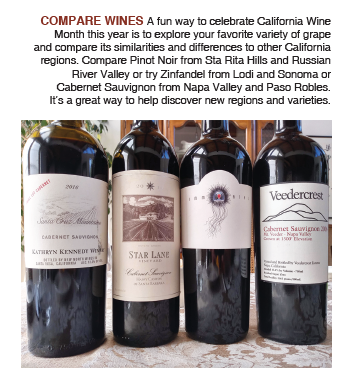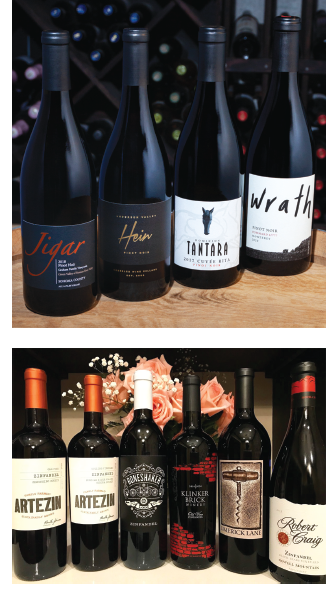September marks a special time for wine enthusiasts as California Wine Month returns, celebrating the rich heritage and vibrant culture of the state’s renowned wine regions. From the rolling vineyards of Napa Valley to the sun-kissed slopes of Sonoma, this month-long celebration offers a unique opportunity to explore the diverse flavors and sustainable practices that define California wines.
As we celebrate, California wineries, vintners, and grape growers are immersed in the many jobs that are required to finish the current grape harvest and ensure the next vintage is headed toward a wine lover's waiting glass.
While taking a trip to one of the celebrated wine-making regions across the state might be the most fun way to participate, California Wine Month can be celebrated anywhere. Simply pop open a bottle of your favorite California wine and give a toast to the delicious juice provided by the Golden State.
Although less than one percent of the land in California is planted in vineyards, wine is still one of the top four agricultural products. There are 615,000 producing acres under vine. Of 58 counties in California, 49 grow over 100 varieties of wine grapes.
The wide range of terroir, from coastal to mountain, allows for this diversity. Chardonnay is the most widely planted white in the state at over 88,000 acres; Cabernet Sauvignon is the most widely planted red at 95,638 acres.
Known for producing a lusher, riper style of wine due to the state’s ample sunshine, California has vineyards from the southern region of San Diego to the northern Redwood areas.
A surprising variety of grapes from all over the world are grown in California. This allows for the production of wines of every style. Some regions, like Napa Valley, are known primarily for one, Cabernet Sauvignon.
California produces over 81 percent of all of the wine that is made in the United States. If California was a country, it would be ranked as the fourth-largest producer of wine in the world. Because of California’s production, the United States holds that ranking.
 The California wine industry generates 1.1 million jobs in the U.S., of which more than half are outside of the state.
The California wine industry generates 1.1 million jobs in the U.S., of which more than half are outside of the state.
The 280 million cases produced last year had an estimated retail value of $54.8 billion. This is a hefty sum, but not surprising when considering that three of every five bottles of wine sold in the U.S. come from California. For comparison, the State of Washington is the second largest producer at 17 million cases.
With 4,800 wineries and 5,900 grape growers producing over 680 million gallons of wine, sustainability is important. California has been a world leader in this movement with over 90 percent of the vino produced coming from a certified sustainable winery.
Maintaining the ecosystems, opting to use beneficial animals and insects versus chemical controls, protecting fish and other wildlife, and conserving water and energy are top priorities for the industry.
 Organic vineyard growth has still been slow, but some regions have embraced the practice like the Mendocino wine region which is now 24 percent organic.
Organic vineyard growth has still been slow, but some regions have embraced the practice like the Mendocino wine region which is now 24 percent organic.
California currently leads the U.S. in wine tourism generating over $8.6 billion from over 25 million tourists annually. This makes California the most visited state for food and wine activities.
With harvest festivities and Wine Month celebrations, September has become one of the busiest times of year to travel to California. So, skip the crowded airport and lines, and enjoy the best of California here at home all September long.
While the wines of Napa Valley get the most attention and are worthy of celebrating the season, try wines from other esteemed regions. Other northern regions to note are Sonoma, Mendocino, and Lake County.
Or celebrate the central coast, which includes Paso Robles and the Santa Barbara regions of Santa Ynez, Santa Maria and Santa Rita Hills. These regions are producing world-class wine at more affordable prices.
Other ways to celebrate include exploring your favorite variety of grape and comparing its similarities and differences to other California regions.
For example, compare Pinot Noir from Sta Rita Hills and Russian River Valley. Or try Zinfandel from Lodi and Sonoma. Drink Cabernet Sauvignons from Napa Valley and Paso Robles. These experiments may help you discover new favorite regions, varieties, styles, or producers.
This September, enjoy a glass or two of California’s finest and give a toast to all those winery workers who are harvesting and starting the new 2024 vintage. They make sure that America’s glasses will always be full.